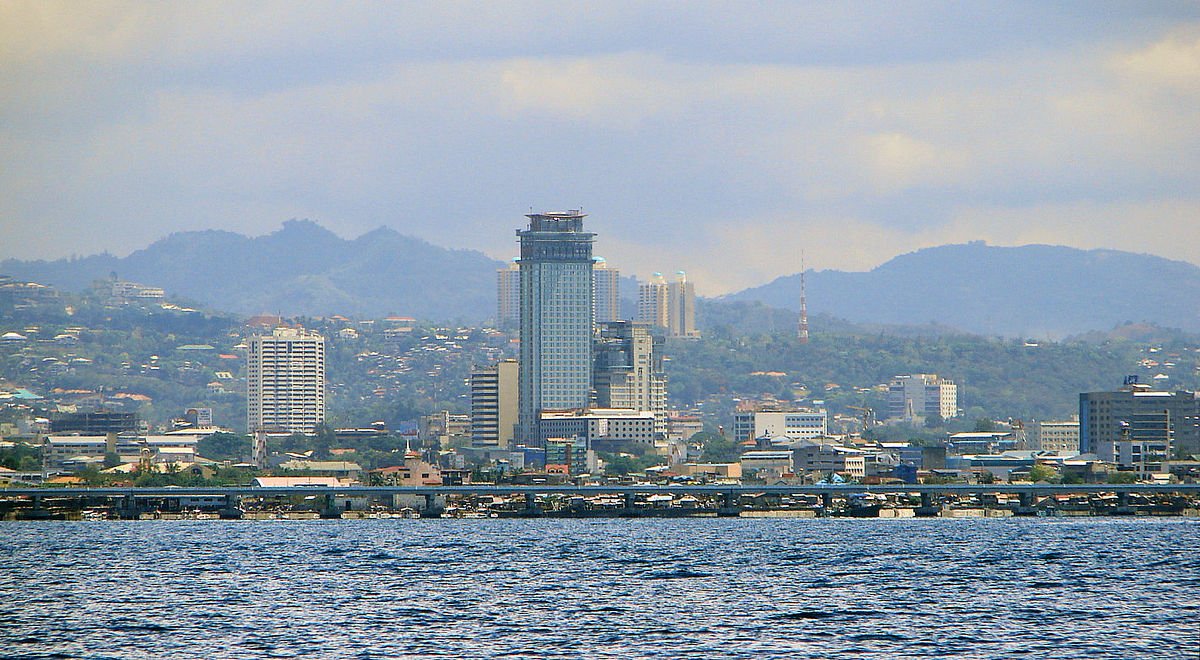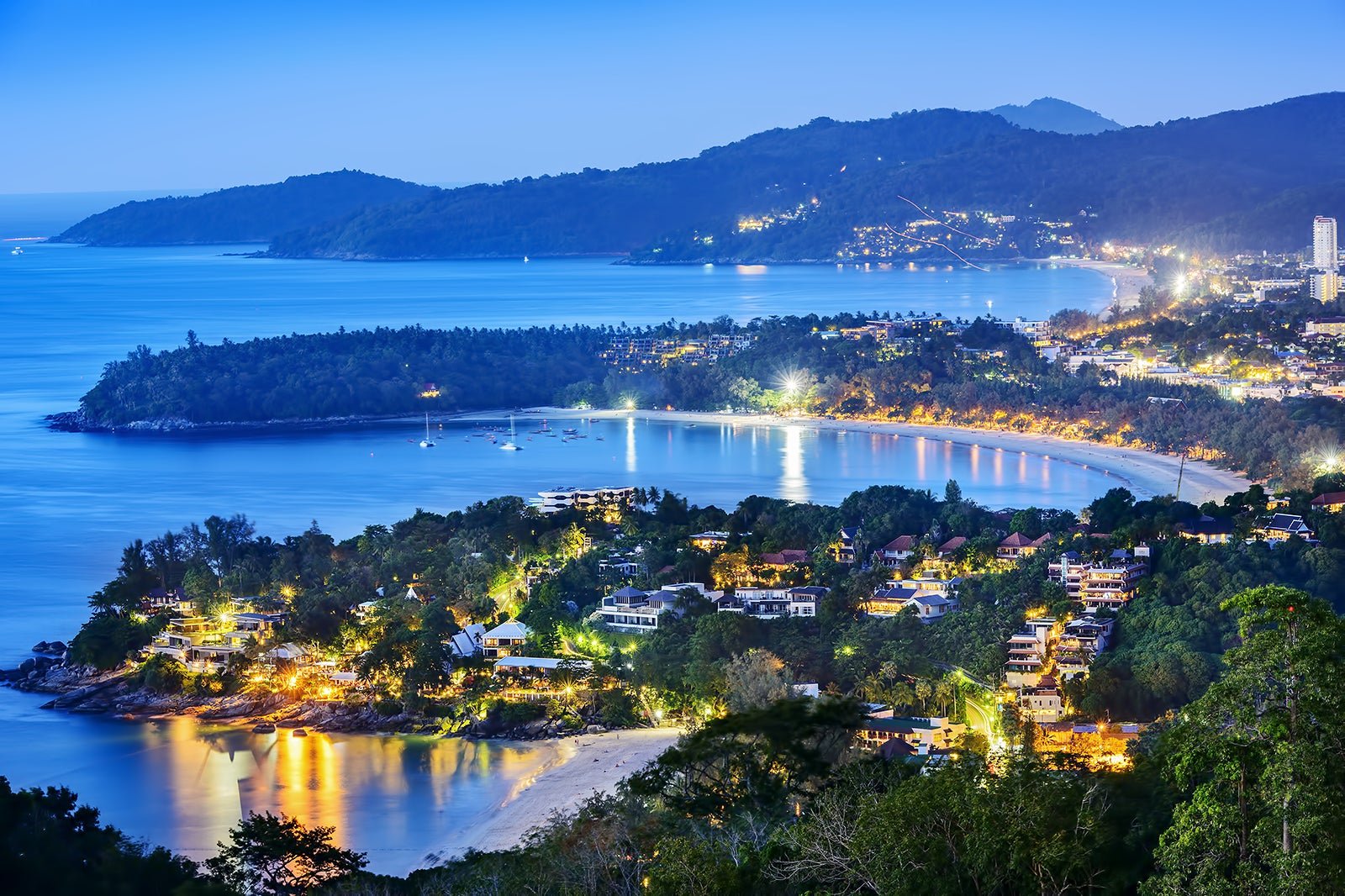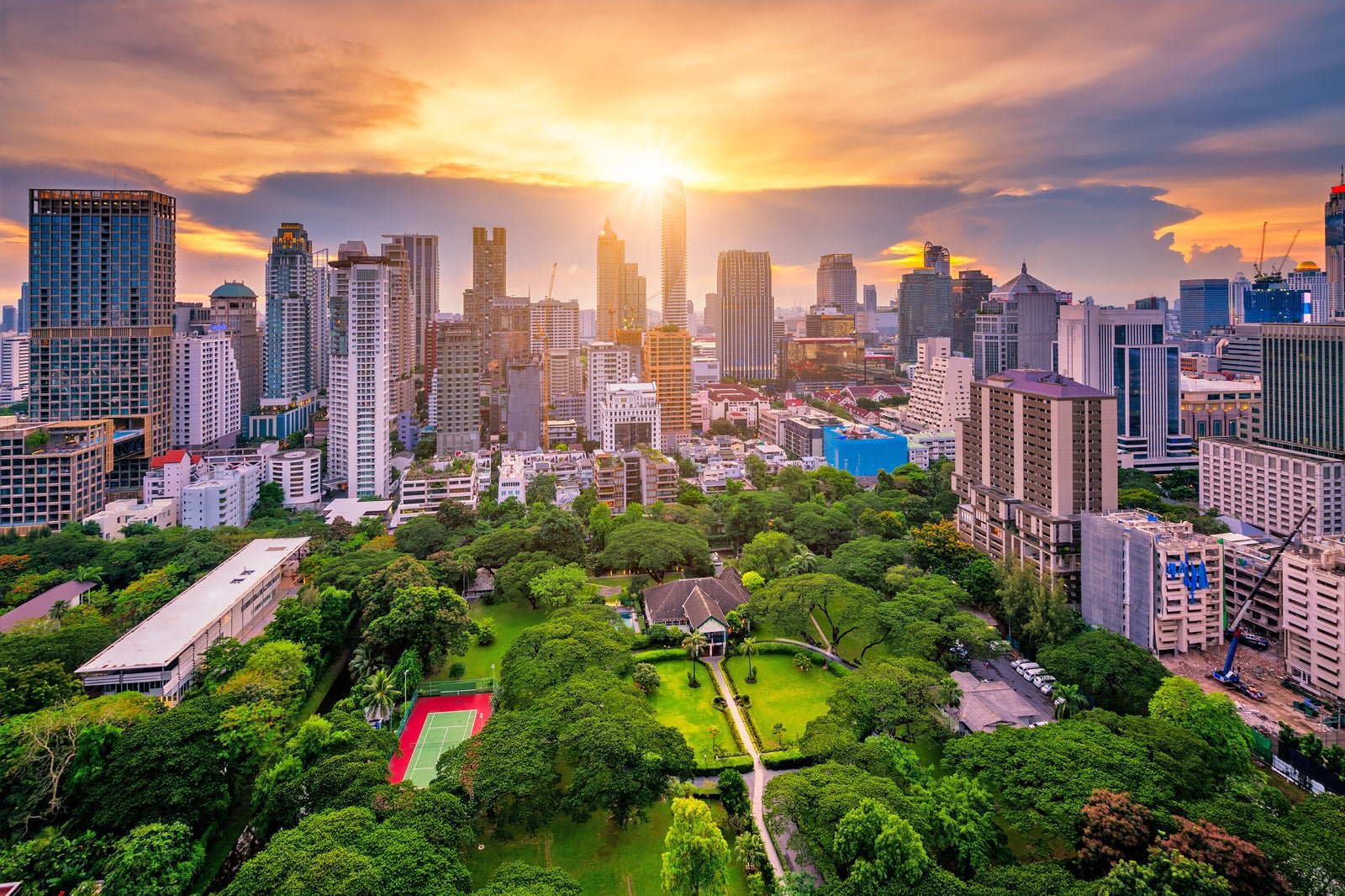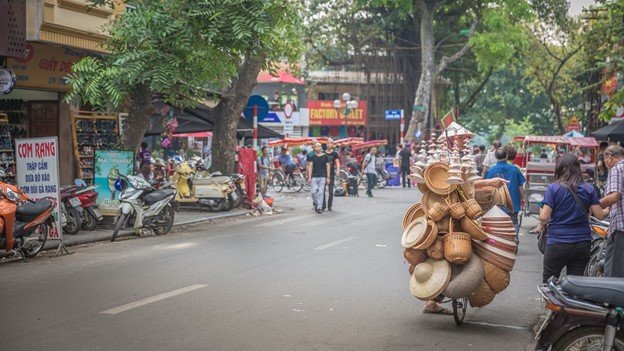-
Posts
2,719 -
Joined
-
Last visited
Content Type
Events
Forums
Downloads
Quizzes
Gallery
Blogs
Everything posted by ASEAN NOW News
-
Hello, We are planning a golf vacation soon and hear the Balanese massage is hard to beat. So what is the best golf club in Indonesia that has a top spa too?
-
Who doesn’t like to play a new golf course for the first time? Well, word on the ground is that there is a golf club in Bangkok that will shortly be adding an extra nine holes, making it a very interesting 27-hole challenge. According to our sources, these new nine holes are some of the best they have ever played. Expats and tourists keen to be among the first to experience these superb and exciting holes should contact Golfasian, Asia’s leading golf tour operator to find out where these mystery nine holes are actually located.
-
Using the data website Numbeo we compared two similar touristy islands in SE Asia: Cebu in the Philippines and Phuket in Thailand. Both offer tourist and ex-pats island living, with many resorts, restaurants, and international airport connections. Both have tropical temperatures however Cebu is prone to typhoons while Phuket is fairly void of them although it did suffer badly from the Tsunami a few years ago. Here are some comparisons. Summary about cost of living in Cebu, Philippines: Family of four estimated monthly costs are 61,767.06฿ (96,351.62₱) without rent. A single person estimated monthly costs are 17,522.35฿ (27,333.45₱) without rent. Cebu is 7.95% less expensive than Pattaya (without rent). Rent in Cebu is, on average, 5.69% higher than in Pattaya. Summary about cost of living in Phuket, Thailand: Family of four estimated monthly costs are 61,895.02฿ without rent. A single person estimated monthly costs are 17,247.47฿ without rent. Phuket is 3.76% more expensive than Pattaya (without rent). Rent in Phuket is, on average, 8.63% higher than in Pattaya. Here are some price comparisons. A McMeal at McDonalds (or Equivalent Combo meal) costs around 180 peso or 140 Baht. If you buy imported beer expect to pay 100 pesos or 140 Baht. Taking a taxi for 1km will cost you 13.25 pesos or 37.50 baht and if you drive expect to pay 73 pesos for a litre of gasoline or 44.29 baht. For the full comparison click here. Currently, the rate of exchange is 1 Philippine Peso = 0.64 Thai Baht.
-
According to the popular website Numbeo you would need around THB71,941.21 (47,173,530.09₫) in Da Nang to maintain the same standard of life that you can have with THB80,000.00 in Pattaya (assuming you rent in both cities). Pattaya Beach This calculation uses Numbeo’s Cost of Living Plus Rent Index which they update monthly to compare cost of living. These figures assume net earnings (after income tax) if you are paying tax. Here are some interesting figures: Consumer Prices in Da Nang are 8.05% lower than in Pattaya (without rent) Consumer Prices Including Rent in Da Nang are 10.07% lower than in Pattaya Rent Prices in Da Nang are 17.17% lower than in Pattaya Restaurant Prices in Da Nang are 25.55% lower than in Pattaya Groceries Prices in Da Nang are 8.54% lower than in Pattaya Local Purchasing Power in Da Nang is 0.55% lower than in Pattaya. Danang Beer drinkers will be saving a lot in Danang Domestic Beer (0.5-liter draught) was -54.81% cheaper in Danang and Imported Beer (0.33-liter bottle) -39.00% cheaper. Other basic costs: Taxi 1km (Normal Tariff) came out 22.72 % higher in Danang. And gasoline currently was -10.55% cheaper in Danang. Rentals Taking a one bedroom apartment in the city centre averaged 13,376฿ (8,771,517₫) in Pattaya compared to 10,770฿ (7,062,500₫) in Danang so Dangang came out 119.48% cheaper. There are a lot of similar comparisons between these two cities. Both are located by the sea with excellent beaches, restaurants, hotels, condominiums, and villas. They are both served by international airports and have rail links as well, which are currently being improved or updated. For golfers, Pattaya has more golf courses at approx. 28 to Danang’s 12, however many of Danang’s courses are new and use the latest technology. The bottom line is this is a snapshot and of course, prices can differ, however, both cities attract a large number of ex-pats, so it is down to personal choice and visa and healthcare facilities on offer.
-
When you are lucky enough to live in SE Asia or maybe go there on holiday, you never know where your next great meal could come from. It could be from a street vendor in a quiet soi in Bangkok. It could be smack in the middle of noisy Old Town Hanoi, from a street chef. Sometimes if you have the budget, it’s at high-end establishments, replete with white tablecloths and clinking champagne flutes. In Southeast Asia, however, the best meals are usually at the humblest of eateries: a street cart, a fluorescent-lit dining room with plastic chairs, or a roadside shack with a hand-painted sign. This part of the world doesn’t care about ambiance — it’s all about flavor. And Southeast Asian cuisine brings the flavor in spades. It’s difficult to narrow down such a breadth of culinary choices into one small list, however, here are five top meals in Southeast Asia: 1. Banh Xeo — Crispy Pork and Shrimp Pancake — Vietnam Photo: Anthony Tong Lee, Creative Commons This simple-yet-delicious Central Vietnamese meal, Banh Xeo brings it all: contrasting textures, hearty and satisfying flavor, and a dash of freshness. Juicy shrimp and hearty minced pork are fried in a wok, then stuffed into a gorgeously crispy rice-and-turmeric shell. Bean sprouts and fresh herbs punctuate the savoriness, giving it a lift that keeps you coming back for more. Wrap it up in a rice paper, dip it into briny nuoc cham, and you’ll have a flavor explosion that will linger in your memory for years to come. It’s a specialty of Hoi An, but you can also find it on menus in Hanoi and Ho Chi Minh City. 2. Babi Guling — Slow-Roasted Pork — Indonesia Photo: Rollan Budi, Creative Commons It was a tossup between Indonesia’s babi guling and the Philippines lechon baboy — both slow-roasted pork dishes that are delicious. The babi guling just wins for a couple of reasons: consistency and spice. In the Philippines, the best place to get lechon is in Cebu, where the Sprite-soaked crispy skin is a piece of crackly heaven. The Indonesian dish not only includes the same ingredients all over the island, but it also packs in several layers of spice. Sweet spice from ginger, galangal, and lesser galangal. Earthy spice from fresh turmeric and black peppercorns. And fiery spice from loads of birdseye chilis. In addition to the briny shrimp paste that pervades all things Balinese, it obliterates all corners of your palate. You can eat it in mostly Muslim Indonesia, it’s hard to find pork outside of Bali. There are several famous babi guling restaurants throughout Bali and the Gilis. 3. Khao Soi — Crispy Noodle Curry — Thailand or Laos Some call it a curry; some call it a soup. Its true nature is entirely dependent on where you’re eating it. In Laos, it’s a clear-broth soup with egg or rice noodles and minced pork. But in Northern Thailand it achieves legendary status. A coconut milk and turmeric sauce cradles pillowy-soft, cooked, and crispy-fried egg noodles, giving a texture bite that most curries are missing. Fried shallots bring a hint of sweetness, fried chilis a hit of tempered spice. A shot of lime rounds everything out with just enough tang to lift everything up from “just another meal” to “one of the best meals you have ever had.” Usually served with chicken or beef, you’ll have a tough time not eating this every day. This dish is a staple of Northern Thailand — good luck finding it in the south, or anywhere outside of the country. Chiang Mai‘s restaurants are a fun way to find your favorite version of this dish, but it can be found in Pai, Chiang Rai, and other Northern Thai cities. 4. Fish Amok — Fish Curry — Cambodia A pretty package: Fish Amok Poor Cambodia. It’s so often overlooked as a culinary destination in Southeast Asia. Yes, Cambodia is sandwiched between spicy Thailand and French-influenced Vietnam. But it has plenty to offer the hungry traveler, if only they knew where to look. And nothing is a better testament to the cuisine than Fish Amok. If you like your sweet with hit of tart, you’ll fall in love with the thick, almost custard-like sauce that forms the base of this dish. The ginger-galangal-turmeric trifecta is back, ground down into a paste. Into all this spicy, earthy goodness, tart lemongrass and kaffir lime leaves create the perfect tart tang to cut through it. A little hint of chili a splash of coconut milk round everything out. Tossed into a banana leaf with freshwater white fish and steamed until done, it is perfection on a plate. You will find this dish on menus all over Cambodia, no need to make a special trip for this one! 5. Chili Pan Mee — Stir-Fried Wheat Noodles — Malaysia This iconic noodle dish is served two ways: wet or dry. Both are excellent, but the dry version really speaks to my soul. Thick, hearty wheat noodles are smothered in a just-fiery-enough caramelized chili sauce. This is then topped with seasoned minced pork, crispy fried shallots, dark and light soy sauce, and crispy-fried anchovies. Yes, anchovies. It sounds gross, but they lend the perfect umami crunch to offset the fiery chili. Many places also serve this with a poached or soft-boiled egg — break the yolk, shovel it down, and thank the universe that you are a human with tastebuds. The best place to find this is in Kuala Lumpur — there are several restaurants and food stalls in the markets that offer it. Of course, we are sure you will have your own favourites so do let us know by posting a suggestion and why.
-

Is Manila cheaper to live in than Bangkok?
ASEAN NOW News posted a topic in Philippines General Chat
According to Numbeo the cost-of-living website, you would need around only about Baht87,588.50 (137,995.51₱) in Manila to maintain the same standard of life that you can have Baht110,000.00 in Bangkok (assuming you rent in both cities). Numbeo was launched in 2009 and is the world's largest cost of living database. https://www.numbeo.com/ This calculation uses the Numbeo cost of Living Plus Rent Index to compare cost of living. This assumes net earnings (after income tax). How much does it cost to live in Manila per month? Summary about cost of living in Manila, Philippines: Family of four estimated monthly costs are Baht64,581 (101,521₱) without rent. A single person estimated monthly costs are Baht18,501 (29,084₱) without rent. How much does it cost to live in Bangkok per month? Summary about cost of living in Bangkok, Thailand: Family of four estimated monthly costs are Baht 75,970.66 without rent. A single person estimated monthly costs are 21,099.82฿ without rent. Of course, these figures are average figures supplied by Numbeo and could differ depending on your lifestyle. Bangkok is 26.95% more expensive than Pattaya (without rent). Rent in Bangkok is, on average, 90.58% higher than in Pattaya. How much does rent cost in Manila Philippines? Monthly rents of units in row houses can range from PHP 15,000 to PHP 30,000 per month depending on the square footage. On the other hand, spacious units in mid- and high-rises have monthly rental rates of PHP 30,000 to PHP 40,000 per month. Average Rent Per Month in Bangkok: Apartment (1 bedroom) in City Centre Baht19,209.21 Apartment (1 bedroom) Outside of Centre Baht9,729.73 Apartment (3 bedrooms) in City Centre Baht73,014.67 Apartment (3 bedrooms) Outside of Centre Baht32,344.83 How far does $100 go in the Philippines? In the Philippines, USD $100 Can Get You: 2-3 nights' stay in a three-star Cebu or Manila hotel. 1-3 one-way trips on a Philippines budget air carrier. 100-150 Filipino beers. In Thailand, USD $100 Can Get You: 10-15 meals from any number of Bangkok Street food stalls 300 Thai beers 2-5 nights in a three-star Phuket beach resort 60-140 one-way trips on the Bangkok rail system (BTS/MRT). 2-3 one-way flights between Bangkok and Phuket. In summary Consumer Prices in Manila are 23.94% lower than in Bangkok (without rent). Consumer Prices Including Rent in Manila are still 20.37% lower than in Bangkok. However, restaurant Prices in Manila are 3.86% higher than in Bangkok. So overall although it costs more to live in Bangkok at least you get a lot more beers. -
Whether you are visiting HCMC or Hanoi here are two excursions you should add to your bucket list. Cu Chi Tunnels Cu Chi Tunnel - the extensive labyrinth of underground tunnels made during the Vietnam war. The tunnels of Củ Chi are an immense network of connecting tunnels located in the Củ Chi District of Ho Chi Minh City (Saigon), Vietnam. This incredible labyrinth of tunnels really stands out among all locations that appear to represent a tenacious Vietnamese spirit. A ride to underground tunnels would open a window into the rich past of this land, evoking scenes from the Vietnam War. After war ravages, Cu Chi is undeniably distinguished by its perseverance and resolve to restore itself. This region played a crucial role in US troops' wartime defeat and is known for its underground tunnel network. To camouflage Viet Cong forces, a labyrinthian network of tunnels was used to pass secret messages and stage clandestine attacks. They have become an enduring reminder of the Vietnam war and are a popular tourist attraction for those interested in exploring extraordinary steps taken by Viet Cong soldiers to escape and eventually kill their enemies. While Cu Chi tunnels have become world-famous, the entire scheme extends through Vietnam, unraveling under the cities and towns, in some areas extending as far as Cambodia. Cruising in style If you are planning to visit Northern Vietnam and are staying in Hanoi then you must include a side trip to one of the wonders of the world Halong Bay. Take an overnight Cruise in Halong Bay Halong Bay is a remarkable geographical formation with 1,900 islets with sandy beaches, freshwater lakes, granite caves, and floating villages. The best way to explore this landscape is by joining an overnight Halong cruise. For first timers, a two-day one-night cruise is the best choice to explore numerous islands, villages, and caves and enjoy exciting activities like swimming, kayaking, rowing boat. Cruise sundeck always is the first choice to enjoy the breathtaking scenery with panoramic sea view, taste a cocktail, or immerse yourself in the melodious music. Join our 3 x a week Vietnam News, Travel and Expat information newsletter and keep up to date. https://aseannow.com/newsletter.php
-
Angeles City is perhaps most famous for its raucous nightlife, making it effectively the Sin City of the Philippines. Angeles City is in Pampanga province in the Central Luzon region of the Philippines. The city is rich in history and heritage, with old and historically significant buildings dotting its landscape, but these days it is best known for its high concentration of casinos and the vibrant nightlife for men. Angeles City is a smaller but beautiful upcoming tourist destination that is worth a visit. You will be surprised by some of the unique things to do and places you can explore at this hidden destination. Angeles, officially the City of Angeles (Kapampangan: Lakanbalen ning Angeles; Tagalog: Lungsod ng Angeles), is a 1st class highly urbanized city in the province of Pampanga, where it is geographically situated but remains politically independent. It is located in the region of Central Luzon, Philippines. The best time to visit the Philippines and Angeles is during the dry season between November and April, when the country's beautiful islands and remote areas are fully accessible. The shoulder months of May and November are also good, as it is less crowded, but the weather is still lovely. Staying in style Agoda was showing over 250 hotels and apartments in Angeles City and if you wanted a room at a 5-star hotel in November they had rates from only US$43 a night and condo-hotels for only US$16. Angeles City is well known as we have said for its raucous nightlife, however, that’s not the only string to its bow. Particularly in downtown Angeles, away from the entertainment districts, you’ll find a number of extraordinary historical places to visit. Some of the older buildings have been at the crossroads of the country’s history and continue to stand the test of time. The Clark Freeport area of the city, around the international airport, also has its share of interesting attractions. Most notable is the tax-free shopping that gives the area its name. Clark Sunvalley GC If you are into your golf, the area is rich in several first-class golf courses all within a 30 -60 minutes drive. There are also a couple of theme parks for the kids. Where is the red-light district? Fields Avenue also known as Walking Street, is the name of a major street running through Balibago area of Angeles City. It is the center of the red-light district and the bar scene of the biggest entertainment district of the Philippines. The girls love to line dance on masse here and there are a few bars with similar names as found in Pattaya’s Walking Street. Getting There You can of course fly to Manila and then go by bus or taxi to Angeles. The fastest way to get from Manila Airport (MNL) to Angeles City is by taxi which takes 1h 18m and costs around ₱1,500 - ₱1,800. There are also direct buses between Manila Airport (MNL) and Angeles City. Clark International Airport which has recently been upgraded is only 24 minutes to Angeles and there are buses and taxis available. Clark's airport Here is a list of the international flights into Clark at the moment: 1. Cebu Pacific. One of the Philippines’ major airline companies, it flies to almost ten local destinations and five international destinations. If you’re looking to fly cheap but comfortable, this is the perfect airline for you. This airline is also one of the locals’ favorite as it offers popular destinations such as Clark to Singapore direct flights in its international variety. Here’s a full list of its direct flights through Clark Airport: · International Destinations: Narita – Tokyo, Hongkong, Guangzhou, Singapore · Local Destinations: Bacolod, Caticlan, Cebu, Davao, Iloilo, Puerto Princesa 2. Philippine Airlines. The Philippines’ flag carrier airline – this is perfect for travelers who want a premier experience when flying. It is the only airline to offer direct flight to Basco, Batanes from Clark Airport but has a wide variety of flights offered under its operations. Here’s a complete list: · International Destinations: Seoul – Incheon · Local Destinations: Cebu, Bacolod, Basco, Busuanga, Calbayog, Catarman, San Vicente, Siargao, San Jose (Antique) 3. AirAsia. Another emerging airline in the Philippines but already established with Asian routes, this airline has become more active in Clark Airport in recent years. See a full list of its destination offerings: · International Destinations: Cagayan de Oro, Caticlan, Cebu, Davao, Puerto Princesa, Tacloban · Local Destinations: Taipei – Taoyuan, Kaohsiung, Seoul – Incheon 4. South-Korea Bound Airlines. With the increasing number of South Koreans wanting to visit the Philippines to experience the tropical weather and even learning English, these airlines have expanded their operations to Clark Airport. The most common route is from Clark to Incheon. If you’re planning to experience the Korean culture for your vacation, check out these airlines and specific routes via Clark Airport. · Jin Air. Provides direct flights from Clark to Seoul – Incheon, and Clark to Busan, South Korea. · T’Way Airlines. Provides direct flights from Clark to Seoul – Incheon. · Korean Air. It also operates direct flights from Clark to Seoul – Incheon. · Jeju Air. Provides direct flights from Clark to Seoul – Incheon. · Pan-Pacific Airlines. A Philippine-based airline that concentrates on Clark to Seoul-Incheon flights. 5. Chinese Based Airlines. Chinese tourists have enjoyed the stronger relationship between China and the Philippines under the current administration, hence there are more airlines investing on direct flights via Clark Airport. See the list below: · Cathay Pacific. Operates Clark to Hongkong direct flights. · China Eastern Airlines. Provides Clark to Shanghai-Pudong flights. · XiamenAir. Operates Clark to Quanzhou flights. 6. Middle East-Based Airlines. Many Filipinos working as Overseas Filipino Workers in the Middle East are regulars on these airlines as well as tourists who like to enjoy the Arab culture. The airlines who are operating in Clark Airport are some of the world’s premier airlines – offering ultimate comfort and world-class service. Try it now: · Qatar Airways. Operates Clark to Doha, Qatar flights. · Emirates. Operates Clark to Dubai flights. 7. Other Asian-Bound Airlines. There are other two airlines that offer direct Clark to Singapore flights. 1. Scoot. This low-cost Singapore airline is known for its Clark to Singapore flights. 2. JetStar Airlines. Operates from Clark to Osaka – Kansai and Clark to Singapore. 8. Other Philippine Local Airlines. Here are some local airlines that cater to some popular destinations in the Philippines to alleviate the tourists from traveling by land for many hours. Check it out: · Royal Air Philippines. A new airline company in the Philipines, its focus are the local destinations which include flights from Clark to Caticlan and Puerto Princesa. · AirSWIFT. This is the only airline from Clark that flies directly to El Nido. Enjoy your visit. Join our 3 x a week Philippines News, Travel and Expat information newsletter and keep up to date. https://aseannow.com/newsletter.php
-
Following on from last week’s post, it seems many of you are keen to stay away from the main touristy attractions and prefer to explore by yourself. So here are another three places to add to your list. Ha Giang: Great forested limestone and granite mountains Ha Giang is a land with many magnificent landscapes: Dong Van Geopark, Quan Ba Twin Ranges, Ma Pi Leng Pass, 16 ethnic brotherhoods with their cultural features and vibrant traditional dresses in residential areas. The beauty of pristine natural scenery of the Rocky Mountains, deep valleys & spectacular rice terraces is a unique point of this; a must-visited & off-the-beaten-path destination for adventure lovers & nature. Along with the magnificence of the landscape, travelers will hear about the rich culture and lifestyle of local ethnic groups living in this Vietnamese highland. Great forested limestone & granite mountains in Ha Giang As rice terraces change their natural color from green to yellow at the beginning of October, it's so lovely to have breathtaking captures of stepped rice fields down the valleys with their numerous golden layers. It is also fascinating to see local ethnic groups happily gathering rice in their colorful clothes, placing it on the sack, and carrying it home. How lovely to see local rice-stepped farming practices with buffalo plowing, harrowing & planting on the high mountain slope terrains. Then you are intrigued by the purple & pink colors of buckwheat flowers blooming everywhere in Ha Giang between late October & early November. Buckwheat is considered a symbolic flower in the northern mountainous regions of Vietnam and its finest beauty that you can only find in Ha Giang province. The only way how to get to Ha Giang is to travel by bus/van/motorbike. The closest airport to Ha Giang is Noi Bai Airport in Hanoi, about 260 km south of Ha Giang. In the future there should be opening a new airport in Lao Cai. Con Dao: prison island In the past, people always thought of frightening jails when discussing Con Dao and felt the agony of history. But in recent years, voted by a popular Travel & Leisure magazine as one of the 10 most stunning and enigmatic archipelagos globally, Con Dao is now being picked as a paradise for leisure travel nature discovery. Firstly, Con Dao's elegance is undoubted, as it is fortunate to have all the best for a beach destination. People also said it is a "compensation" from God for his grim past. Con Dao is the biggest of sixteen islands, with 200 km of perfect coastline with a sparkling emerald sea and fine white sandy beaches. Con Dao Island looks like a mighty hunting sea bear from the air, amidst the USA's unbelievable blue. Con Dao Island Additionally, any tourist who comes to this gorgeous island has the same fresh air sensation and a pristine environment. Natural biodiversity is unspoiled enough that tourists can also see wild animals up in forested mountains, such as beautiful chamois, and all kinds of birds leisurely hopping on the trees. Con Dao Island, the setting for Six Senses Con Dao, is 140 miles (230 kilometers) from Ho Chi Minh City. It takes a 45-minute domestic flight from Tan Son Nhat Airport (SGN) in Ho Chi Minh City to Con Dao Airport (VCS), then a 10-minute drive to the resort. Hanoi Old Quarter: the spiritual symbol of Hanoi The Hanoi Old Quarter is a top tourist destination with its stunning architecture, Buddhist temples, and long, narrow-styled shops. If you have ever explored the back streets in Paris you will love the old quarter. It would easily be one of the most unforgettable moments of your journey to Vietnam to experience Hanoi’s Old Quarter's architecture. In this part, the French colonial has made an enormous influence on houses. On several corners in Old Quarter, you will notice a collection of small houses with tile roof blocks after blocks featuring French themes. Each house is just a few meters tall, but about 10 meters long and has two to three floors. Artisans or merchants manufacturing their items in the same places they sell made a cooperative structure for delivering goods to specific streets. For instance, Hang Gai Street offers ready-made and personalized silk garments, embroidery, and silver items. Wherever you wander you will come across interesting sites and some unusual and unique items to take home. Join our 3 x a week Vietnam News, Travel and Expat information newsletter and keep up to date. https://aseannow.com/newsletter.php
- 1 reply
-
- 1
-

-
If you have any golf items for sale don't forget to use our Golf in Thailand Golf Items for Sale Forum. Just click here for the link. https://aseannow.com/forum/281-golf-items-for-sale/
-
Expats especially after a lifetime of working hard often dream of living in a warm climate in SE Asia. Therefore, retiring to the Philippines is a dream for many ex-pats. The country has pleasant weather most of the year, interesting local cuisine, and affordable housing, are just a few reasons why. Life in the Philippines The first thing you’ll notice about the Philippines is the weather. With lows of about18°C and highs in the thirties, the Philippines is ideal if you don’t like extreme climates. The Philippines is also a naturally beautiful country Located in the Pacific Ocean near the equator, the Republic of the Philippines consists of around 7,640 islands — about 2,000 of which are inhabited — that form an archipelago. Although cities like Manila are all hustle and bustle, it’s the countryside, coastal regions, islands, and rainforests that make the Philippines picturesque. As a retiree, another benefit of living in the Philippines is that English is widely spoken. The absence of a language barrier makes things like banking, shopping, and travelling easy to manage. Many Philippine regions are structured to make visitors feel welcome. From English signs to general courtesy, Filipinos understand the benefits of friendly hospitality. In fact, there’s even a Philippine Retirement Authority (PRA). Approved by former President Ferdinand E. Marcos, the PRA offers guidance to overseas retirees. The US military’s long history with the Philippines has already created a large ex-pat community. Consequently, there are tons of businesses like pubs, diners and letting agencies all catering to foreign settlers. The extensive ex-pat community also means there are plenty of opportunities to socialise. So, whether you’re into golf, (there are over 95 top-class courses there) salsa, or cooking, you’re never far away from meeting new people. Retirement visas for the Philippines The first step in retiring in the Philippines is getting a Special Resident Retiree Visa (SRRV). Also known as a ‘retirement visa,’ an SRRV gives you the right to remain in the Philippines. The basic requirements for the visa are that you’re at least 50 years old and you may need to deposit at least £7,250 in savings into a Filipino bank account (or £14,500 if you don’t have a guaranteed monthly income). Have evidence that your pension is at least £580 a month (or £725 for couples). You can count other benefits towards this amount. After that, you’ll need to cover other expenses like your visa fee and for an Alien Certificate of Registration (ACR-I). Of course, rules and regulations change, so best to check with a local Philippines Embassy or consulate or check out the Philippine Retirement Authority . If you want to keep up to date then join our 3 x a week Philippines News, Travel and Expat information newsletter and keep up to date. https://aseannow.com/newsletter.php



















.thumb.jpg.783f5506cb631166d1d11c0b33431201.jpg)






